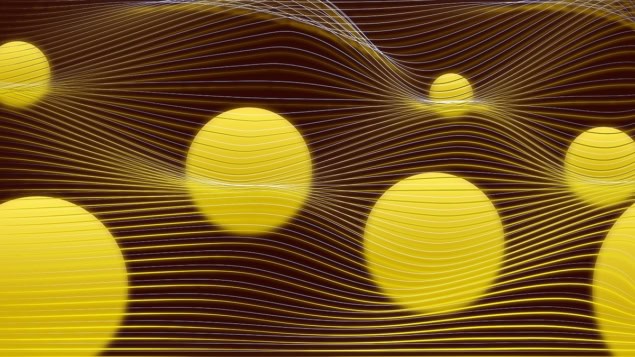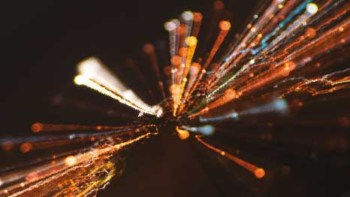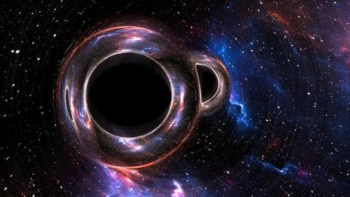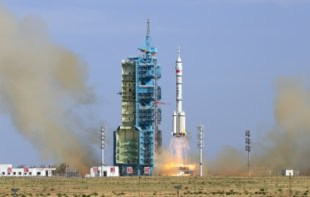
Gravity might be able to quantum-entangle particles even if the gravitational field itself is classical. That is the conclusion of a new study by Joseph Aziz and Richard Howl at Royal Holloway University of London. This challenges a popular view that such entanglement would necessarily imply that gravity must be quantized. This could be important in the ongoing attempt to develop a theory of quantum gravity that unites quantum mechanics with Einstein’s general theory of relativity.
“When you try to quantize the gravitational interaction in exactly the same way we tried to mathematically quantize the other forces, you end up with mathematically inconsistent results – you end up with infinities in your calculations that you can’t do anything about,” Howl tells Physics World.
“With the other interactions, we quantized them assuming they live within an independent background of classical space and time,” Howl explains. “But with quantum gravity, arguably you cannot do this [because] gravity describes space−time itself rather than something within space−time.”
Quantum entanglement occurs when two particles share linked quantum states even when separated. While it has become a powerful probe of the gravitational field, the central question is whether gravity can mediate entanglement only if it is itself quantum in nature.
General treatment
“It has generally been considered that the gravitational interaction can only entangle matter if the gravitational field is quantum,” Howl says. “We have argued that you could treat the gravitational interaction as more general than just the mediation of the gravitational field such that even if the field is classical, you could in principle entangle matter.”
Quantum field theory postulates that entanglement between masses arises through the exchange of virtual gravitons. These are hypothetical, transient quantum excitations of the gravitational field. Aziz and Howl propose that even if the field remains classical, virtual-matter processes can still generate entanglement indirectly. These processes, he says, “will persist even when the gravitational field is considered classical and could in principle allow for entanglement”.
The idea of probing the quantum nature of gravity through entanglement goes back to a suggestion by Richard Feynman in the 1950s. He envisioned placing a tiny mass in a superposition of two locations and checking whether its gravitational field was also superposed. Though elegant, the idea seemed untestable at the time.
Recent proposals − most notably by teams led by Sougato Bose and by Chiara Marletto and Vlatko Vedral – revived Feynman’s insight in a more practical form.
Feasible tests
“Recently, two proposals showed that one way you could test that the field is in a superposition (and thus quantum) is by putting two masses in a quantum superposition of two locations and seeing if they become entangled through the gravitational interaction,” says Howl. “This also seemed to be much more feasible than Feynman’s original idea.” Such experiments might use levitated diamonds, metallic spheres, or cold atoms – systems where both position and gravitational effects can be precisely controlled.
Aziz and Howl’s work, however, considers whether such entanglement could arise even if gravity is not quantum. They find that certain classical-gravity processes can in principle entangle particles, though the predicted effects are extremely small.
“These classical-gravity entangling effects are likely to be very small in near-future experiments,” Howl says. “This though is actually a good thing: it means that if we see entanglement…we can be confident that this means that gravity is quantized.”
The paper has drawn a strong response from some leading figures in the field, including Marletto at the University of Oxford, who co-developed the original idea of using gravitationally induced entanglement as a test of quantum gravity.

Unifying gravity and quantum mechanics without the need for quantum gravity
“The phenomenon of gravitationally induced entanglement … is a game changer in the search for quantum gravity, as it provides a way to detect quantum effects in the gravitational field indirectly, with laboratory-scale equipment,” she says. Detecting it would, she adds, “constitute the first experimental confirmation that gravity is quantum, and the first experimental refutation of Einstein’s relativity as an adequate theory of gravity”.
However, Marletto disputes Aziz and Howl’s interpretation. “No classical theory of gravity can mediate entanglement via local means, contrary to what the study purports to show,” she says. “What the study actually shows is that a classical theory with direct, non-local interactions between the quantum probes can get them entangled.” In her view, that mechanism “is not new and has been known for a long time”.
Despite the controversy, Howl and Marletto agree that experiments capable of detecting gravitationally induced entanglement would be transformative. “We see our work as strengthening the case for these proposed experiments,” Howl says. Marletto concurs that “detecting gravitationally induced entanglement will be a major milestone … and I hope and expect it will happen within the next decade.”
Howl hopes the work will encourage further discussion about quantum gravity. “It may also lead to more work on what other ways you could argue that classical gravity can lead to entanglement,” he says.
The research is described in Nature.



